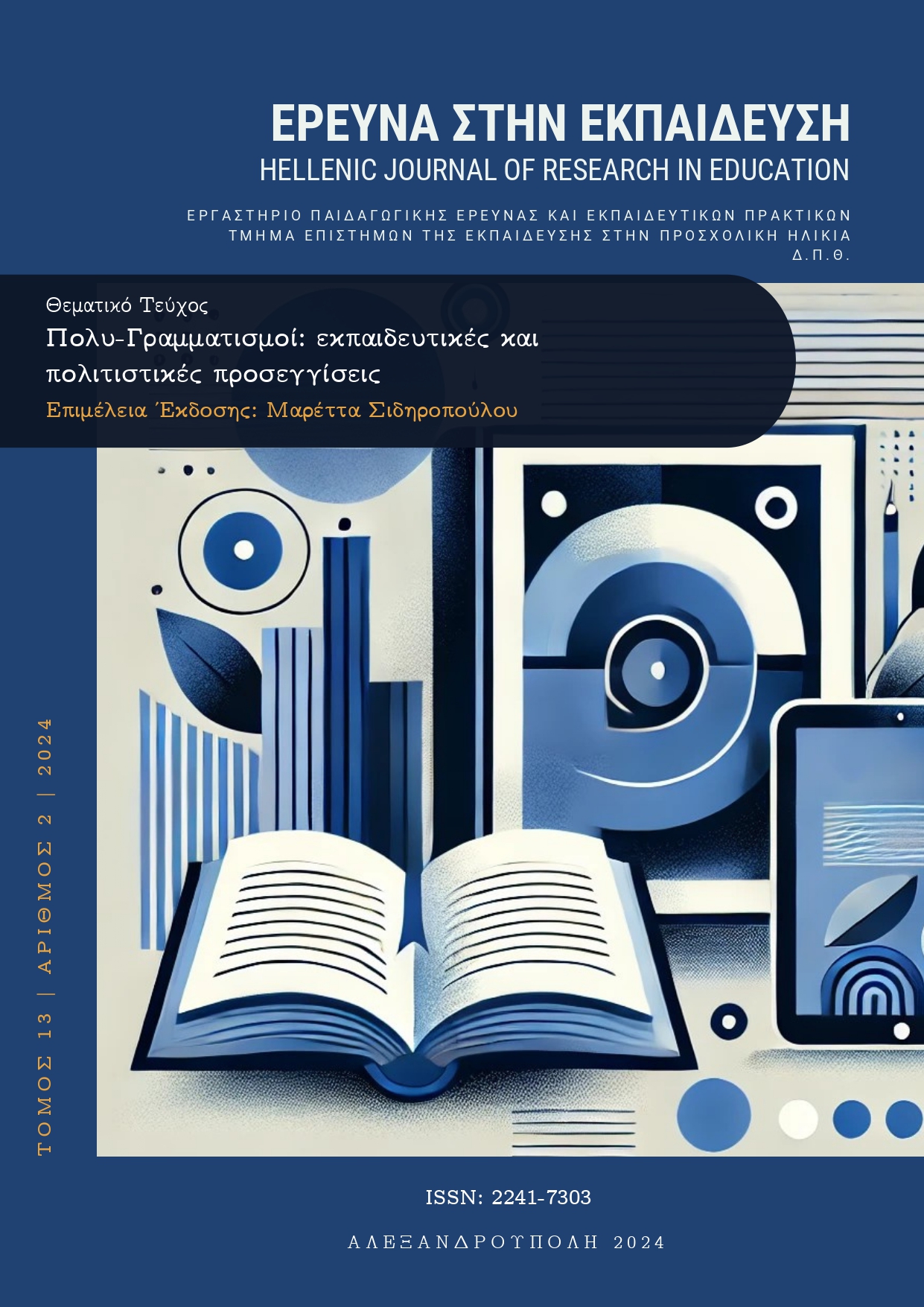Συνδυάζοντας Πολυγραμματισμούς με τη μεθοδολογία STEAM στο σύγχρονο σχολείο

Περίληψη
Οι Πολυγραμματισμοί αναγνωρίζουν τις ποικίλες μορφές γραμματισμού που απαιτούνται στον σημερινό πολύπλοκο και ταχέως μεταβαλλόμενο κόσμο. Η έννοια των πολυγραμματισμών υπερβαίνει τις παραδοσιακές έννοιες της ανάγνωσης και της γραφής, ενσωματώνοντας ένα ευρύτερο φάσμα δεξιοτήτων, όπως ο ψηφιακός γραμματισμός, ο οπτικός γραμματισμός, η πολιτισμική επάρκεια και η κριτική σκέψη. Στο σύγχονο σχολείο, οι εκπαιδευτικοί στοχεύουν να εξοπλίσουν τους μαθητές με την ικανότητα να πλοηγούνται και να επικοινωνούν αποτελεσματικά με διάφορους τρόπους επικοινωνίας και μέσα. Αυτό περιλαμβάνει την κατανόηση και την παραγωγή γραπτών κειμένων, καθώς και την ενασχόληση με οπτικές, ηχητικές και ψηφιακές πληροφορίες προετοιμάζοντας τους μαθητές και μαθήτες για τις απαιτήσεις μιας παγκοσμιοποιημένης και τεχνολογικά καθοδηγούμενης κοινωνίας. Μέσα από την παρούσα εργασία, θα συνδυαστεί η συμβολή των πολυγραμματισμών με τη μεθοδολογία STEAM (Επιστήμες, Τεχνολογία, Μηχανική, Τέχνες, Μαθηματικά) με στόχο η συνδυασμένη χρήση αυτών των δύο προσεγγίσεων να ενισχύσει την εκπαίδευση με ενδιαφέρον και πολυπολιτισμικό περιεχόμενο μέσα από την παρουσίαση και αξιολόγηση από εκπαιδευτικούς σε όλη την επικράτεια, δύο εγκεκριμένων έργων STEAM στα πλαίσια Εργαστηρίων Δεξιοτήτων του Ινστιτούτου Εκπαιδευτικής Πολιτικής.
Λεπτομέρειες άρθρου
- Πώς να δημιουργήσετε Αναφορές
-
Φώτη Π. (2024). Συνδυάζοντας Πολυγραμματισμούς με τη μεθοδολογία STEAM στο σύγχρονο σχολείο. Έρευνα στην Εκπαίδευση, 13(2), 122–133. https://doi.org/10.12681/hjre.37853
- Ενότητα
- Άρθρα

Αυτή η εργασία είναι αδειοδοτημένη υπό το CC Αναφορά Δημιουργού – Μη Εμπορική Χρήση – Παρόμοια Διανομή 4.0.
Τα πνευματικά δικαιώματα των άρθρων του περιοδικού ανήκουν στους συγγραφείς. Τα άρθρα διατίθενται με άδειες Creative Commons CC-BC-SA 4.0


